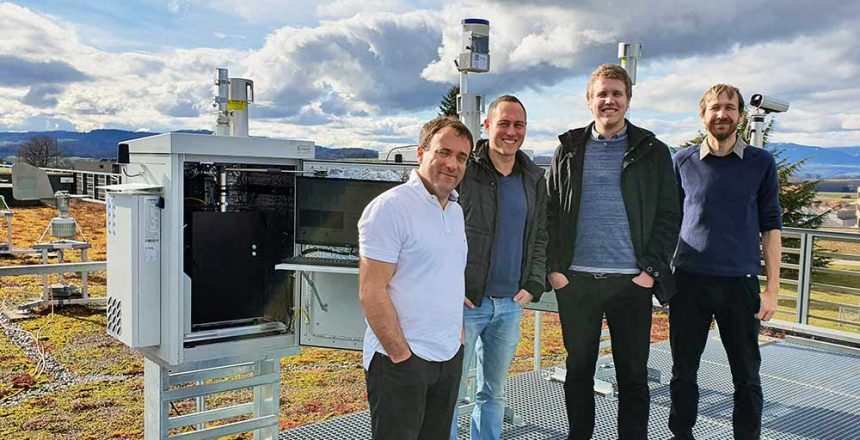The Swiss Federal Office of Meteorology and Climatology MeteoSwiss, recently completed the successful proof-of-concept phase for the new Swiss network for automatic pollen measurement, which is being developed in collaboration with Swisens.
Der Swisens Poleno, der auf Basis von holographischer Bilderkennung funktioniert, ermöglicht die Zählung und Identifizierung von Bioaerosolen in Echtzeit. “Der Schwerpunkt des Proof-of-Concept lag nicht nur auf der Pollenmessung, sondern es wurden auch das Datenmanagement und die Datensicherheit evaluiert, um eine nahtlose Integration in die Oberflächen-Beobachtungsnetzwerke von MeteoSchweiz zu gewährleisten”, verrät Dr. Benoît Crouzy, Wissenschaftler und Projektleiter für das automatische Schweizer Pollenmessnetz bei MeteoSchweiz.
During the experiment, three Swisens Poleno systems were operated in parallel outdoors and compared with two Hirst-type volumetric pollen samplers. The Hirst type pollen trap is the current reference for operational pollen measurements (European standard) and is based on manual counting of pollen by human operators using microscopes. “In addition to this validation of the operational set-up, the automatic pollen monitors were compared with an optical reference particle counter in a controlled environment at the Swiss Federal Institute of Metrology (METAS). The measurements showed good comparability with both the manual pollen counts and the absolute particle count reference. The operation of the system also proved to be stable and reproducible.
The first stations will be put into operation at the beginning of the 2021 pollen season, and the complete network, consisting of 20 systems distributed throughout Switzerland, will be operational in 2022. “With the new automated systems, airborne pollen concentrations will be available within minutes of measurement. This in turn will make it possible to produce much improved pollen forecasts and information systems that will be of great benefit to allergy sufferers, their doctors and researchers. “Furthermore, thanks to these latest technological developments, which allow very rapid counting of a large number of particles, it is now possible to better understand the complex interplay between atmospheric and biological processes,” Crouzy continues.
According to Swisens and MeteoSwiss, the possibilities of Swisens Poleno can be further exploited. The two organisations plan to develop an extension of the operational detection algorithms by training the system on fungal spores that also cause allergies or plant diseases.
This article was written for the September 2020 issue of MTI Magazine. The full and original article can be found here.

